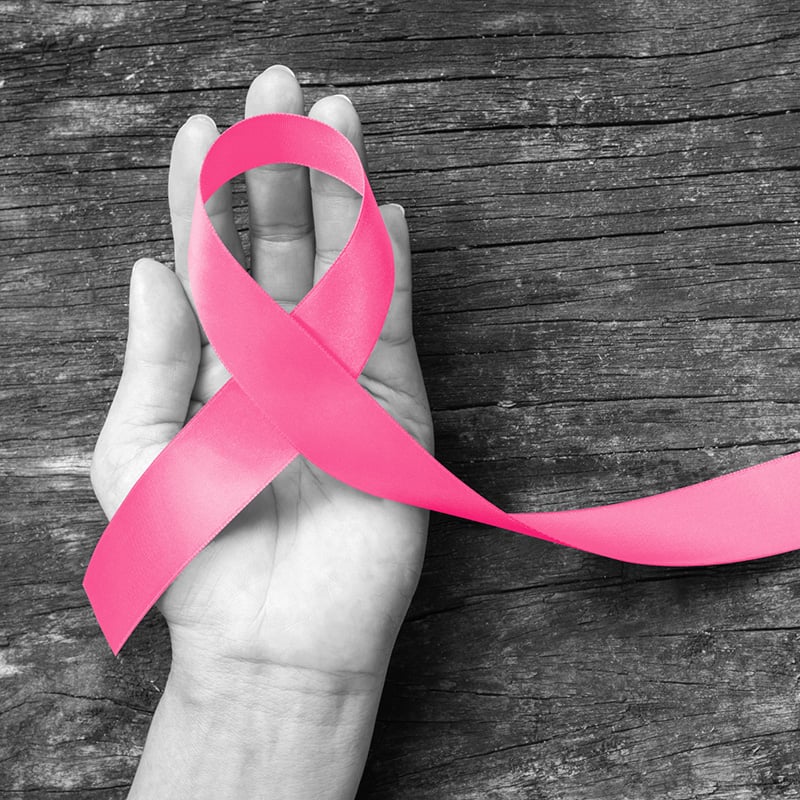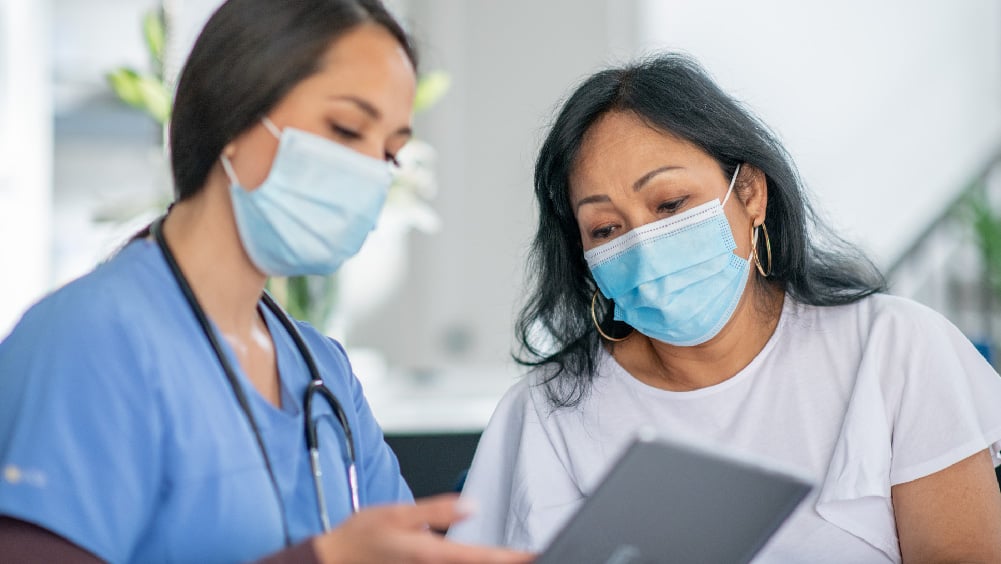More than 310,000 women are expected to be diagnosed with breast cancer this year, according to the American Cancer Society. One in eight women in the U.S. are diagnosed with breast cancer in their lifetime.
Healthcare providers encourage women to get screened regularly to catch any potential signs of breast cancer as early as possible. Screening tools include regular mammograms, genetic testing, and risk assessments.
A breast cancer risk assessment is an important tool used by providers to help determine the level of risk someone faces for developing breast cancer. Kelly Krupa, MD, is a breast surgical oncologist at Rochester Regional Health Breast Center and explains how risk assessments work, along with other important screenings for breast cancer.
How a breast cancer risk assessment works
Risk assessment tools use statistical models to estimate a patient’s risk of developing breast cancer in the near future. The American Society of Breast Surgeons (ASBS) recommends all women undergo a risk assessment at age 25 to determine their lifetime risk of developing breast cancer.
Providers, including primary care providers, gynecologists, and imaging providers, use risk calculators such as the Tyrer-Cuzick or Gail models to help them determine how different factors might raise a patient’s risk of developing breast cancer. During a risk assessment evaluation, a provider will ask a patient about several factors, including their:
- age
- age at first live birth
- age at menarche
- breast density
- genetic testing results
- family history (including genetic risks)
- height
- hormone replacement therapy use
- number of past breast biopsies and associated pathology
- race or ethnicity
- weight
The answers to these questions are taken into account at the same time to establish risk and are meant to determine if a woman should seek out additional screening options or testing based on their risk level. Generally, women who have a lifetime risk greater than 20 percent are considered to be high risk.
“It is the role of the provider seeing the patient to use clinical judgment when using risk calculators,” Dr. Krupa said. “As tools, risk calculators are not perfect. We have to look at each individual patient and make sure the calculation makes sense.”
Start Your Breast Cancer Screening Assessment Now
Other breast cancer screening tools
There are a number of important risk factors that can affect a woman’s likelihood of developing breast cancer, including breast density, genetic mutations, and hormone replacement therapy.
Depending on a patient’s risk level, they might need to seek out a different level of risk reduction or preventative care. There are four pillars of preventative care: lifestyle changes, breast imaging, chemoprevention, and surgery.
Lifestyle changes
Recommended changes to a woman’s lifestyle are the least aggressive form of breast cancer prevention. The main changes that are shown to reduce breast cancer risk are:
- limiting alcohol intake to 3 drinks per week or less
- maintaining a healthy body weight
- engaging in 150 minutes of physical activity each week
Providers with Rochester Regional Health’s Lifestyle & Culinary Medicine team specialize in helping women set and achieve goals for lifestyle changes.
Breast imaging
Most women will begin getting annual mammograms at age 40, according to American College of Radiology and ACBS guidance. For women considered high risk, a breast MRI or breast ultrasound would be used in addition to a mammogram to get a more robust picture of the breast tissue.
Chemoprevention
In some cases, a provider may recommend taking breast cancer chemoprevention medications to reduce the risk of developing breast cancer. Medications such as tamoxifen can help to reduce the effects of estrogen in the body, which is shown to influence the growth and development of breast cancer cells.
Surgery
Going through a surgical procedure is considered the most aggressive form of risk reduction and prevention for the development of breast cancer. The risk reducing surgeries offered are typically bilateral mastectomies – which includes complete removal of all of the breast tissue on both sides sometimes, including the nipple and areola. Patients have the option to work with a plastic surgeon to have reconstruction performed.
The Rochester Regional Health's Breast Center offers a comprehensive High-Risk Breast Cancer Screening Clinic to help women with a strong family and personal history of breast cancer learn about and mitigate their risk. Regular clinical breast exams, breast MRIs and ultrasounds, genetic testing, and other areas of breast cancer screening and prevention are readily available through the program.
“Breast cancer is very treatable when it’s found early,” Dr. Krupa said. “In the early stages, all treatment options are on the table. If we can identify those patients who are high risk and start screening sooner, hopefully if cancer is found, it is early stage and the outcomes are excellent.”










